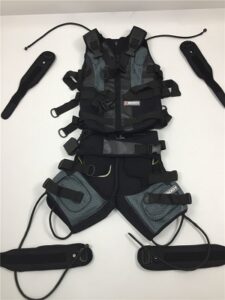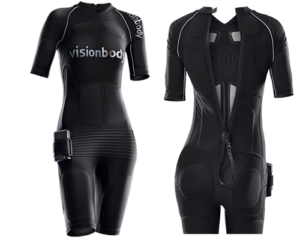In recent years, Electronic Muscle Stimulation (EMS) has garnered attention as an innovative approach to enhancing muscle strength and achieving fitness goals. While the popularity of EMS continues to rise, questions about its safety have also emerged. This comprehensive article seeks insight into the safety aspects of EMS training, addressing the crucial question: Is electronic muscle stimulation safe? We will delve into the advantages of EMS and offer essential safety precautions to empower you to make informed decisions.
Understanding Electronic Muscle Stimulation (EMS)
Electronic Muscle Stimulation, also known as neuromuscular electrical stimulation (NMES), entails the application of controlled electrical impulses to muscles, causing them to contract and relax. This technology has found applications as a complement to training regimens, a tool for physical therapy, and a means of aiding muscle recovery.
Safely Harnessing the Power of Electronic Muscle Stimulation
- Utilize Proper Equipment:
- Opt for certified EMS devices from reputable sources bearing essential certifications (such as CE for Europe or FDA for the US).
- Adhere strictly to manufacturer guidelines and consult a healthcare professional to alleviate safety concerns.
- Embrace Correct Exercise Form:
- As with any workout, correct form is pivotal. Enlisting professional guidance is essential to avoid improper execution and potential injuries.
- The Pepper training app offers expert-designed EMS workouts that guide users through exercises to prevent exercise-related injuries.
- Tailored Intensity Settings:
- Adjust EMS device intensity levels to match your fitness level and comfort.
- Gradually progress intensity and duration to prevent muscle soreness or discomfort.
- Adhere to Safety Guidelines:
- Individuals with pacemakers, severe heart conditions, or other contraindications should avoid EMS training.
- Consult a physician for certain health conditions, such as severe muscle strain, joint problems, or cardiovascular diseases.
- Manage Duration and Frequency:
- Limit EMS strength training to a maximum of 50 minutes per week, with each session lasting no more than 25 minutes.
- Include rest days and gradually increase duration and frequency for optimal results and safety.
The Role of Creatine Kinase (CK)
When assessing the safety of EMS training, understanding its impact on Creatine Kinase (CK) levels is crucial. CK is an enzyme present in various tissues, including skeletal muscles, the heart, and the brain. It plays a vital role in energy metabolism, facilitating the conversion of creatine to phosphorescing for readily available energy during muscle contractions.
EMS and Creatine Kinase Levels:
- Temporary Elevation: EMS sessions may temporarily increase CK levels, mainly after High-Intensity Interval Training (HIIT). This elevation is typically transient and does not signify injury.
- Muscle Damage Indicators: Elevated CK levels can indicate muscle damage, but EMS-induced increases are usually post-exercise effects, differing from sustained elevation in muscle injuries.
- Adaptation and Recovery: Consistent EMS training can reduce muscle damage indicators over time, aided by proper rest intervals and adaptation.
In Conclusion
Electronic Muscle Stimulation is generally considered safe when employed correctly, adhering to established guidelines, and evaluating individual health factors. By following expert guidance, using reputable equipment, and customizing settings, you can minimize potential risks associated with EMS training. While temporary CK level increases may occur, they differ from sustained elevation linked to muscle injuries. However, consulting a healthcare professional before commencing any new training regimen is prudent, especially for individuals with underlying health conditions.
Frequently Asked Questions (FAQs)
- Is EMS training safe for everyone?
EMS training is generally safe, but certain individuals, such as those with pacemakers, severe heart conditions, or specific health conditions, should avoid it. Consult your physician before starting an EMS program, especially if you have underlying medical concerns.
- Can I do EMS training if I’ve never worked out?
Absolutely! EMS training can be adapted to various fitness levels. Certified trainers can guide beginners through tailored workouts to ensure a safe and effective experience.
- How often should I do EMS training for optimal results?
For optimal results, limit EMS strength training to 50 minutes per week, with each session lasting no more than 25 minutes. Gradually increase duration and frequency over time, considering rest days for recovery.
- What is the role of Creatine Kinase (CK) in EMS training?
Creatine Kinase (CK) is an enzyme that plays a role in energy metabolism during muscle contractions. EMS sessions may result in temporary CK level increases, but these differ from sustained elevation in muscle injuries. With proper adaptation and rest, CK levels can stabilize.
- Can EMS training aid in muscle recovery?
Yes, EMS training can assist in muscle recovery by promoting blood flow and facilitating muscle contractions. Properly executed EMS sessions and rest and recovery techniques can contribute to enhanced muscle recuperation.











